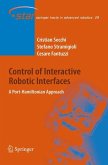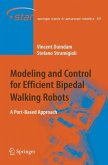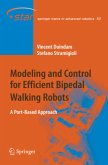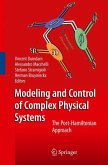This monograph deals with energy based control of interactive robotic interfaces and the port-Hamiltonian framework is exploited both for modeling and controlling interactive robotic interfaces. Using the port-Hamiltonian framework, it is possible to identify the energetic properties that have to be controlled in order to achieve a desired interactive behavior and it is possible to build a port-Hamiltonian controller that properly regulates the robotic interface by shaping its energetic properties.
Thanks to its generality, the port-Hamiltonian formalism allows to model and control also complex interactive robotic interfaces in a very natural way. In this book, a port-Hamiltonian approach for regulating the interaction between a robot and a local environment, a virtual environment (i.e. haptic interfaces) and a remote environment (i.e. bilateral telemanipulation systems) is developed.
Thanks to its generality, the port-Hamiltonian formalism allows to model and control also complex interactive robotic interfaces in a very natural way. In this book, a port-Hamiltonian approach for regulating the interaction between a robot and a local environment, a virtual environment (i.e. haptic interfaces) and a remote environment (i.e. bilateral telemanipulation systems) is developed.
From the reviews: "This book deals with the important problem of modeling and controlling the interaction between two physical systems-from one side the robot and from the other side its environment. ... It is a suitable tool to formally model physical systems based on the energy concept and its relations. The authors introduce the energy-based control to the modeling and controlling phase of interactive robotics interfaces. ... The theoretical considerations and solutions are well interpreted with some practical examples." (Aleksander Michal Nawrat, Mathematical Reviews, Issue 2008 f)








